Anemia nutrition diet is rich in iron, proteins, vitamins, and minerals that can keep anemia at bay. Iron can be supplied to the body through iron-rich foods and supplements. Cooking in iron pots and vessels is advisable as it adds iron to the diet.
Vitamin C is essential for the absorption of iron in the body. It is necessary to take a diet rich in vitamin c to avail the benefits of iron.
Iron is also necessary to improve focus and concentration among students.
|
Morning Drink | Almond milk with hazelnuts |
|
Breakfast |
Ragi idly, mint chutney |
|
Soup |
Lettuce, green pea soup |
|
Salad |
Kale, spinach sesame salad |
|
Lunch |
Red rice, Mackerel fish curry, blueberries |
|
Evening Snack |
Mixed roasted nuts (walnuts, pecans, cashews, almonds) |
|
Dinner |
Whole wheat bread sandwich, Pomegranate |
Consult 19 years experienced Chief Nutritionist Vasanthi for expert advice and a personalized diet plan. In-person consultation at HSR, Koramangala, Bellandur, Haralur, and video consultation across India.
- Consultation INR 750
- 1 Week personalized diet plan INR 2000
- 1 Month personalized diet plan INR 4000
- 3 Months personalized diet plan INR 9000
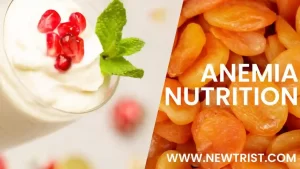
Table of Contents
Anemia
Anemia is a condition in which the blood does not contain sufficient red blood cells.
Reduction in red blood cells reduces the supply of oxygen to the organs of the body. Anemia is caused due to the lack or deficiency of iron in the body.
Symptoms of Anemia
- Weakness
- Pale skin
- Tiredness
- Headache
- Dizziness
- Loss of appetite
- Shortness of breath
Who are more prone to Anemia
Women are more prone to be anemic as they lose their iron every menstrual cycle and at the time of labor. Usually, women have lower hemoglobin levels when compared to men.
Iron and protein are essential for the formation of hemoglobin in red blood cells. The decrease in iron intake decreases the hemoglobin level in the blood.
Thalassemia
Thalassemia is a disorder in which the oxygen-carrying protein (Hemoglobin) is lower than normal. It is an inherited disorder in which the red blood cells are very few.
When there is a reduction in the red blood cell count, the amount of oxygen carried to the cells reduces considerably which in turn makes the person tired. This condition is called anemia.
In thalassemia, the anemia may be mild or severe. If thalassemia is mild, treatment may not be necessary. Thalassemia is usually diagnosed through blood tests which reveal the percentage of hemoglobin present in the blood.
If the person is undergoing a blood transfusion, it is necessary to follow a diet low in iron, and avoiding iron-fortified foods is considered beneficial.
According to some studies, children affected with thalassemia are found to have high levels of depression and anxiety. Thalassemia may lower memory power and concentration among children.
Thalassemia Menu Plan
A day’s anemia nutrition menu plan for Thalassemia patient
|
Morning Drink |
Raisins soaked in water |
|
Breakfast |
Multigrain dosa with amla chutney |
|
Soup |
Moringa leaf soup |
|
Salad |
Baby corn and green apple salad with lemon curd dressing |
|
Lunch |
Mushroom and tofu stir fry |
|
Evening Snack |
Pineapple crumble |
|
Dinner |
Mashed potatoes with steamed corn |
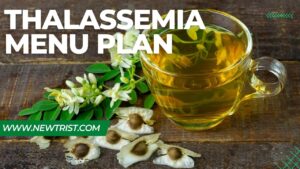
Sickle Cell Anemia
Sickle cell anemia is an inherited group of diseases in which the blood cells turn sickle-shaped and makes the cells break down easily. Demand for healthy red blood cells increases as the cells die earlier than before in this type of anemia.
These sickle cells can cause the blood flow to block resulting in pain. Sickle cell anemia can be treated but cannot be cured. It can be cured in some cases through bone marrow or stem cell transplantations which are not carried out frequently due to the risks involved.
The pain caused due to SCA may be sharp and intense which may be anywhere in the body. Patients with sickle cell anemia may experience swelling in the hands and feet, vision problems, delayed growth, and pain in various parts of the body.
Sickle Cell Anemia Diet Chart
A whole day’s sickle cell anemia nutrition diet chart is given below.
|
Morning Drink |
Guava pineapple drink |
|
Breakfast |
Roasted root veggie tacos, Rose apple |
|
Soup |
Garlicky moong sprouts soup |
|
Salad |
Walnut and cherry tomato salad |
|
Lunch |
Lentils and cheese toast, Apricot juice |
|
Evening Snack |
Khajur Pista almond peanut burfi |
|
Dinner |
Spaghetti with vegetables garlic bread, banana |
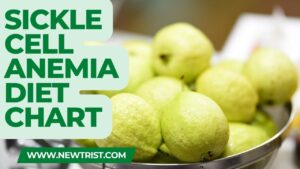
Pernicious Anemia
Pernicious anemia is caused due to the drop in red blood cells in the blood when the body is unable to utilize vitamin B12. It is a rare disorder that can be treated with the help of vitamin-rich foods and supplements.
Pernicious anemia causes inflammation of the stomach lining and the inability to absorb vitamin B12 in the small intestine. It usually occurs above the age of 60.
Pernicious anemia is more prevalent in Northern Europe and African countries. It usually shows no symptoms, but patients report general fatigue, headache, loss of appetite, weight loss, and shortness of breath.
Food To Eat For Pernicious Anemia
Pernicious anemia nutrition menu plan for a day.
|
Morning Drink |
Banana kiwi smoothie |
|
Breakfast |
Overnight pumpkin oats with strawberries |
|
Soup |
Mushroom soup |
|
Salad |
Iron man salad |
|
Lunch |
Beetroot rice and orange juice |
|
Evening Snack |
Baked Tofu |
|
Dinner |
Grilled chicken breast with steamed broccoli and a slice of watermelon |
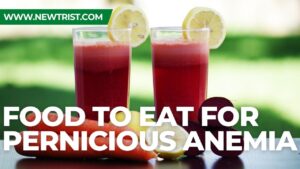
Aplastic Anemia
Aplastic anemia also called Bone Marrow Aplasia is a condition in which the body stops producing red blood cells due to damage to the bone marrow. This is caused due to the damage of stem cells inside the bone marrow.
Aplastic anemia is common among people of all ages, irrespective of men and women. Raw foods, unpasteurized milk and cheese, and unpasteurized juices are the foods to be avoided. It is not a genetic disorder, but the cause of this kind of anemia is unknown.
Diet Plan For Aplastic Anemia
|
Morning Drink |
Lemon juice |
|
Breakfast |
Soya Khaman dhokla + scrambled eggs |
|
Soup |
Mixed vegetable soup |
|
Salad |
Tofu, broccoli, and kale salad |
|
Lunch |
Brown rice, sardines fish curry with mixed sprouts sabzi |
|
Evening Snack |
Hummus with carrot sticks |
|
Dinner |
Roti, Kidney beans curry, and a slice of pineapple |
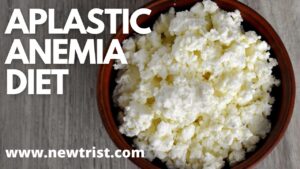
Most common cause of iron deficiency
Anemia may be due to
- Blood loss during accidents or injuries
- Loss of blood during pregnancy and labor
- Frequent blood donations
- Bleeding in the Gastrointestinal tract (GIT)
- Heavy menstrual flow
- Depletion of red blood cells at a faster rate
- A slow-down in the production of RBC cells
Foods to avoid during Anemia
Certain foods hinder the absorption of iron in the body. They are
- Intake of tea
- Coffee
- Carbonated drinks
- Foods rich in Tannins (Sorghum, grapes, chocolate)
- Foods rich in Phytic acid (whole grains, beans, nuts, and seeds)
- Foods rich in oxalic acid
- Cereals and legumes
Cereals and legumes are rich in phytic acid which disturbs the absorption of iron from the food. Milk and milk products can be avoided to a certain extent as milk is a poor source of iron.
To prevent Anemia the diet should be rich in
Anemia nutrition diet includes
- Eggs
- Tomatoes
- Spinach
- Methi leaves
- Moringa leaves
- Broccoli
- Cashews
- Almonds
- Pistachios
- Walnuts
- Pumpkin seeds
- Sunflower seeds
- Flax seeds
Fruits that help to increase hemoglobin levels in the blood
Anemia nutrition recommended fruits to increase the hemoglobin levels in the blood are
- Apples
- Bananas
- Pomegranates
- Prunes
- Apricots
- Oranges
- Grapefruit
- Berries
- Lemon
Diet For Anemia
Below is the anemia nutrition diet plan for a day.
|
Morning Drink |
Beetroot juice, soaked almonds |
|
Breakfast |
Red Bell pepper egg omelet, orange juice |
|
Soup |
Banana flower pinto bean soup |
|
Salad |
P3 salad (prunes, passion fruit, Pomegranate) |
|
Lunch |
Vegetable rice, grilled salmon, black raisins |
|
Evening Snack |
Roasted Pumpkin seeds, turmeric milk |
|
Dinner |
Jowar roti, carrot ginger garlic chutney |
Iron Rich Food For Anemia
Red Blood Cells are important cells in our body that help in the distribution of oxygen to the other parts of the body. They are produced in the bone marrow and circulated in the blood to carry oxygen to the vital organs of the body.
RBCs circulating in the blood for 120 days and after that, the liver destroys the old cells and the body starts producing new ones. Anemia nutrition diet has to be rich in iron and protein which are the 2 main components for the production of hemoglobin.
A balanced diet for anemia nutrition must include iron, Vitamin A, B6, B9, B12, copper, and folic acid.
The RDA for iron for normal women should be 18 mg/day. Copper can be obtained by using copper vessels for cooking and storing water in copper-based containers.
Anemia nutrition foods that help in increasing the RBC count are
- Poultry
- Fishes
- Organ meats
- Dry fruits such as figs, apricots, and raisins
- Nuts
- Egg yolks
- Spinach
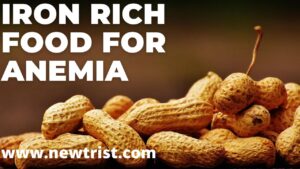
Anemia Nutrition Menu Plan
|
Morning Drink |
Strawberry guava smoothie |
|
Breakfast |
Millet crepe with custard apple |
|
Soup |
Spinach chickpea soup |
|
Salad |
Walnut, cherry tomato with sesame salad |
|
Lunch |
Poha, drumstick leaves kootu, prunes (2) |
|
Evening Snack |
Stuffed dates with almonds |
|
Dinner |
Roti, black-eyed bean curry, dried apricots |
Recipes For Anemia
Paneer stuffed moong dal cheela Ingredients
Moong dhal, urad dhal, paneer, asafoetida, green chili paste, besan, coriander, oil, salt, ginger, turmeric powder, coriander leaves, onion, chaat masala.
Cooking Instructions
- To make the Moong Dal Cheela, soak the urad dal and moong dal together the previous night.
- Grind moong dal along with green chilies and ginger into a smooth batter by adding a very little amount of water. The batter consistency should be like that of a dosa batter.
- Combine all the ingredients for the paneer filling mixture and set aside.
- Heat a skillet and pour a ladle full of moong dal cheela batter in a circular fashion.
- Drizzle oil/ghee around the spread cheela batter.
- Cook the moong dal cheela on medium heat until some brown spots appear around the sides and inside of the cheela.
- Let it get crisp and then flip and cook the cheela for about a minute.
- Remove the moong dal cheela from the skillet, and place it on a platter with the bottom side facing down.
- Fill about a scoop of paneer filling along the center diameter of the cheela and fold it lengthwise tightly.
- Cut the roll diagonally into 2 or 3 pieces and sprinkle more chaat masala on the top.
Nutritional values
Energy: 151 kcal, Protein: 7.2g, CHO: 13.4g, Fat: 7.6g
Benefits
Paneer contains Vitamin D and Calcium, Sphingolipids, and Protein that combats cancer. Vitamin D in paneer strengthens bones. Calcium promotes the normal functioning of the nervous system. Paneer is a rich source of fatty acid.
Easily digestible fats and low carbs help in weight loss. Magnesium acts as a laxative in the digestive system. Phosphorous helps in normal bowel functioning, promotes hemoglobin synthesis, and prevents and cures respiratory ailments.
Moong dal is rich in fiber, so it makes you feel full after eating and increases the metabolism in the body. Thus, it contributes to controlling weight by preventing you from overeating and improves heart health.
Moong dal is rich in potassium and iron. It helps lower blood pressure and protects against muscle cramping. It also regulates irregular heartbeat. The light and easy-to-digest nature of moong dal make it an excellent food for those suffering from hypertension or heart disease.
Moong dal is a nutrient-rich food. It is enriched with minerals like potassium, magnesium, iron, and copper. It is also rich in folate, fiber, and vitamin B6. Moong dal has a low glycemic index. As a result, it helps bring down the body’s insulin, blood glucose, and fat levels.
Improves Digestive Health
Moong dal helps produce butyrate, a short-chained fatty acid that helps maintain the intestinal walls’ health. Moong dal is considered healthy as it is rich in anti-inflammatory properties.
Moong dal is rich in iron and is helpful in the formation of hemoglobin. Moong dal reduces the chances of anemia and improves the overall blood circulation in the body. It is an easy-to-digest food.
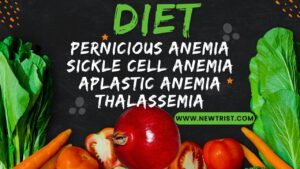
Physical Activity For Anemia
In addition to a change in diet and lifestyle, one must consume large quantities of water and indulge in physical activity for better well-being and health.